How Finnish Schools Integrate Outdoor Learning and Nature into the Curriculum
August 13, 2025

August 13, 2025
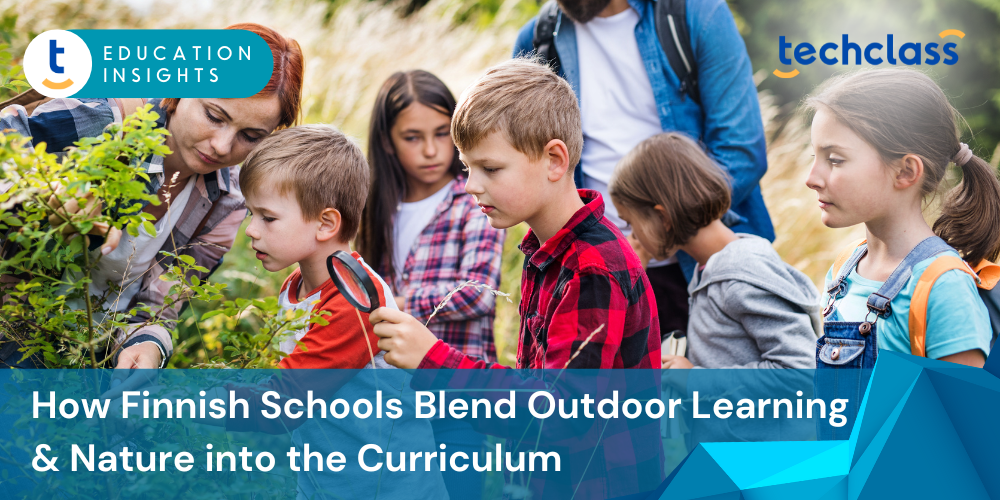
What if the best classroom had no walls? What if children could learn to count by measuring tree trunks, write poetry inspired by birdsong, or understand science by observing melting snow? In Finland, this isn’t a dream—it’s a daily reality.
Finnish schools have embraced outdoor learning not as an occasional break from the classroom, but as a powerful teaching method. Whether it’s a math lesson in the forest, storytelling around a fire, or science experiments at the edge of a frozen lake, outdoor learning in Finnish schools is deeply rooted in the country’s educational philosophy. This inspiring model brings together nature, curiosity, and creativity. It supports children's physical, emotional, and cognitive development—while nurturing a lifelong respect for the environment.
In this article, we’ll explore:
Outdoor learning isn’t a passing trend in Finland—it’s part of a deeper educational philosophy grounded in trust, freedom, and holistic development. At its core, the Finnish approach recognizes that children learn best when they feel safe, well, and connected to their surroundings.
In Finland, schools are more than places to absorb facts—they are environments where each child’s individuality and well-being are respected. Nature, with its calm rhythms and sensory richness, naturally aligns with these values. It provides a space that is flexible, peaceful, and alive with opportunities. There are no hard walls, no artificial lighting, no bells disrupting the flow—just the freedom to move, think, and grow.
Instead of expecting children to sit still at desks for long hours, Finnish educators encourage movement, curiosity, and exploration as essential parts of the learning process. Learning in nature feels natural because it is. Nature invites students to:
Imagine a child building a shelter in the forest. They’re not just playing. They’re measuring wood, testing structure, making decisions, communicating with peers, and thinking critically. They are practicing math, physics, teamwork, and resilience—all without opening a textbook.
.png)
One of the most admired and internationally recognized features of Finland’s early education system is the forest kindergarten—a place where learning happens almost entirely outdoors, regardless of the weather.
These kindergartens, known in Finnish as metsäpäiväkoti (forest daycare), represent a simple yet powerful idea: that nature provides everything children need to grow, learn, and thrive. Instead of bright plastic toys and high-tech classrooms, children in these settings play with what the forest gives them—sticks, rocks, snow, mud, pinecones, and tree stumps. And they don’t miss the gadgets. In fact, they thrive without them.
Children climb, dig, build, jump, observe, and listen. They imagine worlds inspired by wind and wildlife. And all of this happens under the watchful guidance of trained educators, who balance structured activities (like nature-themed songs or group counting games) with unstructured free play, which is essential for creativity and self-regulation.
In many municipalities across Finland, early childhood education centers are intentionally located near forests, fields, or parks—some even have permanent forest classrooms with simple wooden shelters, outdoor fire pits, and logs for seats. Children bundle up in layers during the winter months and wear waterproof suits in the rain. Weather is not seen as an obstacle but as a co-teacher, offering new experiences each season.
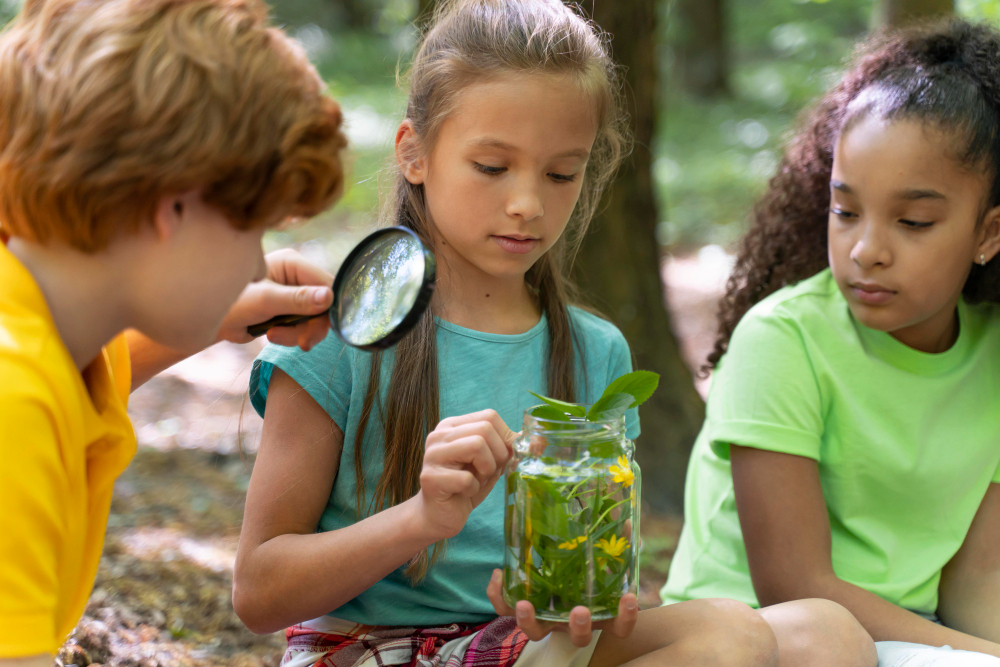
Children in these outdoor programs learn to:
These experiences aren’t just enriching—they’re foundational. By engaging with the real world instead of screens or artificial environments, children build a strong sense of self, resilience, and connection to the natural world.
Take the city of Espoo, just outside Helsinki, for example. It’s home to several thriving forest kindergartens that run full-day programs, regardless of the season. Children spend hours outside each day, supported by educators who specialize in outdoor pedagogy. Even parents quickly notice the difference: kids come home muddy, exhausted—and joyful. They sleep better, concentrate more, and grow more confident in their own abilities.
For many Finnish families, the idea of children playing in the rain or eating lunch beside a snowy trail isn’t unusual—it’s a gift. And for educators around the world, forest kindergartens offer an inspiring, low-tech, high-impact model of how learning can look when we let nature lead.
In many education systems, learning outside the classroom is considered an occasional field trip or a break from “real” academics. But in Finland, outdoor learning is a recognized and encouraged part of the official national curriculum.
The Finnish National Core Curriculum—the framework that guides teaching and learning across all schools—clearly states that learning should happen in varied environments. This includes forests, schoolyards, community gardens, lakesides, and nearby parks. The goal is not just to add variety to school days, but to support deep, experiential learning that is connected to the real world.
Importantly, outdoor education is not limited to physical education or recess. Teachers across Finland regularly take core academic subjects outside, turning nature into a living textbook. Some examples include:
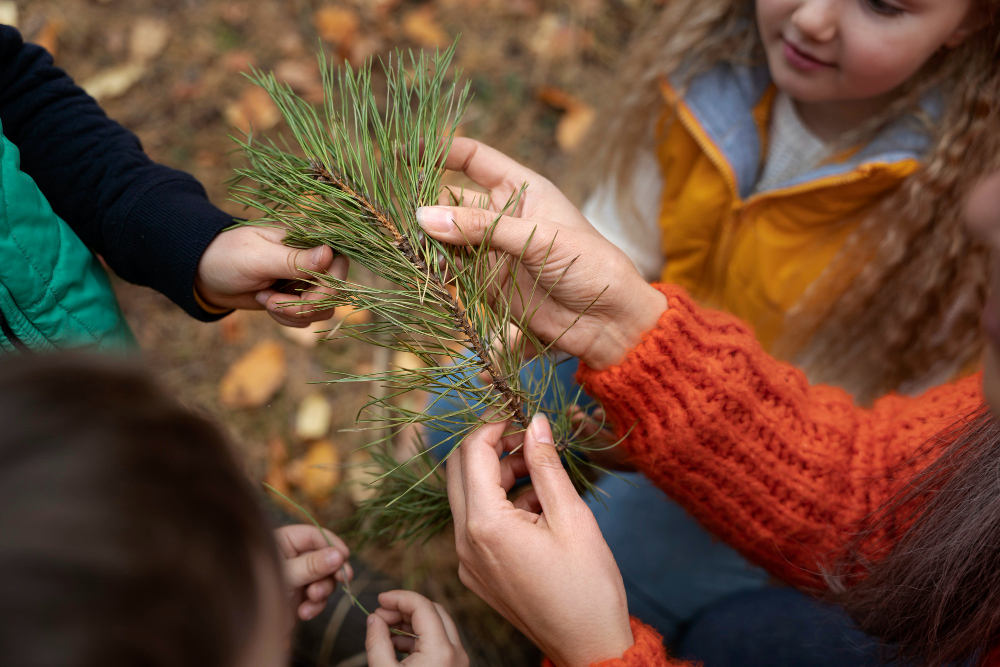
Teachers have the freedom to design creative lessons that connect academic goals with outdoor experiences. This flexibility allows them to respond to student interests and local conditions—whether that means adapting a lesson on weather by observing clouds in real time or studying migration patterns during bird-watching walks.
Another key concept that supports this approach is phenomenon-based learning (ilmiöpohjainen oppiminen in Finnish). This progressive method encourages students to explore broad, real-world themes—like climate change, sustainability, or the water cycle—through interdisciplinary projects.
For instance, a class might study how water moves through the environment. Rather than just learning theory from a textbook, students can:
In this model, nature becomes a dynamic classroom that supports creativity, critical thinking, collaboration, and curiosity. It helps students understand complex systems by experiencing them firsthand.
One of the hallmarks of Finnish education is the high level of autonomy given to teachers. This trust allows them to design and adapt lessons based on their students' needs, interests, and even the changing weather.
Because of this professional freedom, Finnish teachers are uniquely positioned to use outdoor spaces creatively and meaningfully.
Most schools are intentionally designed or located to have easy access to:
These outdoor settings are not just for breaks or free play—they’re used for deliberate, hands-on learning experiences. Teachers often begin lessons indoors with a short introduction, then head outside where the real engagement happens.
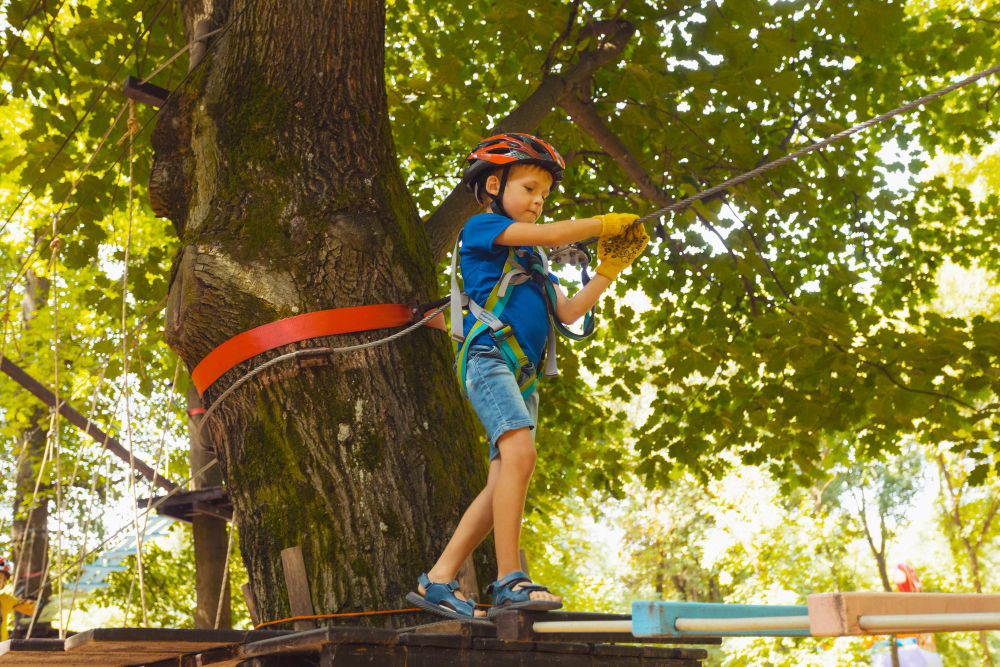
Importantly, teachers in Finland receive training in environmental education, experiential learning, and child-centered pedagogy during their university education. They are encouraged to view nature not just as a backdrop, but as an active learning environment that evolves with the seasons and sparks curiosity in different ways throughout the year. Flexibility is key. If a sudden snowfall arrives, a teacher might spontaneously turn the lesson into:
If a group of students spots fresh bird tracks in the snow, the teacher might guide them through:
And in language or drama classes, teachers often lead story walks, where students move through the forest, taking turns to add to a shared narrative. The story might begin under a pine tree and end beside a frozen pond, each chapter inspired by the surroundings.
This approach helps students develop:
Rather than fighting the unpredictability of nature, Finnish teachers embrace it as part of the lesson. This not only keeps students engaged, but teaches them to be present, curious, and responsive—skills that extend far beyond academics.
It’s not just about fresh air and muddy boots. Outdoor learning in Finnish schools offers measurable and meaningful benefits to both the body and mind. In fact, growing scientific research from around the world—and daily experience in Finnish classrooms—shows that nature-based education has a powerful impact on children’s overall development.
Students who learn regularly in natural environments don’t just gain knowledge—they become healthier, more focused, and more emotionally balanced. And Finnish educators witness these transformations every day. Outdoor learning helps students to:
.png)
The Finnish Institute for Health and Welfare (THL) has repeatedly highlighted the link between time spent in natural settings and mental well-being in children. Even short periods outside can lead to:
Studies also suggest that regular outdoor learning reduces symptoms of ADHD, improves executive function, and supports social-emotional learning, as students must cooperate, communicate, and problem-solve in real-world situations.
With four distinct seasons, each bringing its own colors, textures, sounds, and challenges, the Finnish school year becomes a journey through the changing rhythms of the natural world. Unlike in many countries where outdoor time is reduced during cold or wet weather, Finnish schools embrace all seasons. Rain, snow, wind, and frost are not barriers—they’re invitations. Every shift in the weather presents new opportunities to explore, adapt, and connect. Here’s how each season shapes the learning experience:
Autumn (Syksy): As the trees turn gold and red, classes go outside to collect leaves for science and art projects. Teachers might lead a lesson on why leaves change color, or have students sketch or press them into nature journals. It’s also a common time for school visits to nearby farms, where children can learn about apples, grains, or pumpkins, and taste traditional Finnish autumn foods. Some schools even host small harvest festivals where students help prepare food from the school garden.
Winter (Talvi): When snow arrives—often lasting from November to March—learning simply moves outdoors. Students sled during breaks, but they also build snow forts in teamwork activities or use snow to measure shapes and volumes in math. In art, children may sculpt snow figures or paint on snow using natural colors like beet juice or blueberry water. Many schools have fire pits, and it’s not unusual to warm up with hot juice while learning outside. Teachers prepare by planning short, active lessons and making sure every child has proper winter clothing.
Spring (Kevät): As the snow melts and days grow longer, children are encouraged to look for signs of change. They might track how fast the snow disappears, record temperatures, or watch birds return to build nests. Teachers often start gardening projects—planting herbs, vegetables, or flowers in the schoolyard. Lessons about plant life cycles, pollination, and ecosystems become much more memorable when students are actually growing something with their own hands.
Summer (Kesä): Although the school year ends in early June, outdoor education doesn’t stop. Many Finnish towns offer summer camps that keep children connected to nature. Activities include hiking through forests, swimming in lakes, building rafts, or telling stories around campfires. These camps are usually playful but still educational—focusing on nature, cooperation, and creative thinking.
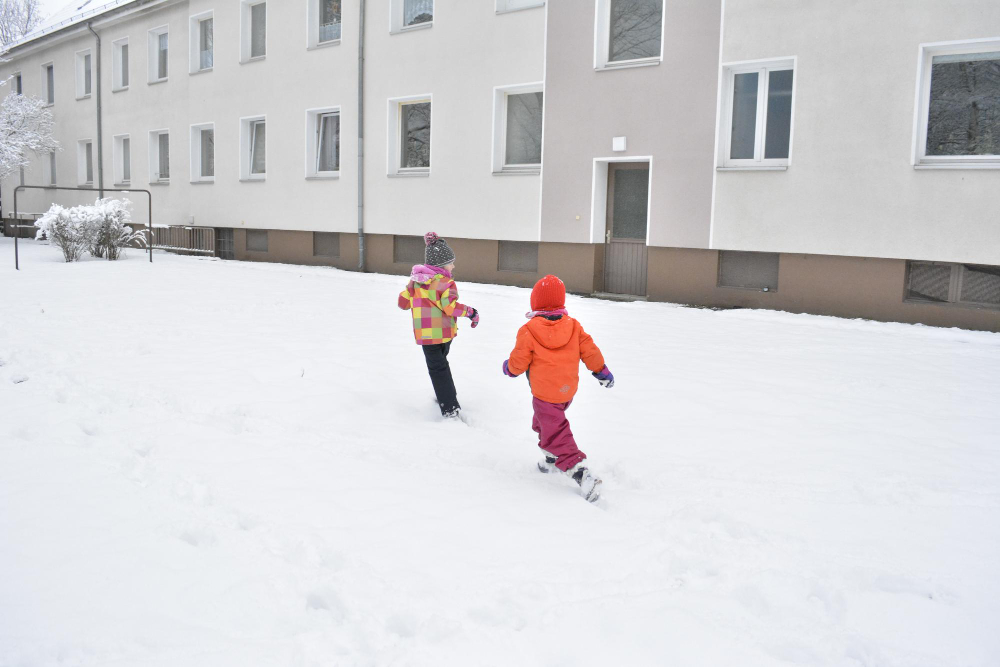
Through this seasonal approach, students aren’t just learning about time—they are living it. They experience the patience required to wait for a plant to grow, the surprise of an early snowfall, the fleeting beauty of spring blossoms, and the long twilight of a Finnish summer night.
This method helps children:
This seasonal rhythm also reflects a deeply Finnish cultural value: “sisu.” It’s a word with no direct translation in English, but it captures the essence of inner strength, determination, and perseverance—especially when things get tough. Going outdoors in freezing temperatures, sticking with a project through winter, and learning to find beauty in a cold, grey landscape are all part of building that resilient spirit.
From a young age, children grow up spending time outside in all seasons. It’s completely normal to see toddlers napping outdoors in their prams, even in winter. As they grow older, children regularly go hiking with their families, ski on local trails, pick berries and mushrooms, and swim in lakes during the summer months. These are not occasional trips—they are part of everyday life.
Finnish schools build on this cultural connection by partnering with local farms, Luontokoulu (nature schools), environmental centers, and outdoor education providers. These partnerships help bring nature-based learning to life through:
Many municipalities take an active role in supporting this model. They maintain hiking trails, build outdoor shelters, and sometimes even provide bus transportation to ensure all students—rural or urban—can access natural spaces.
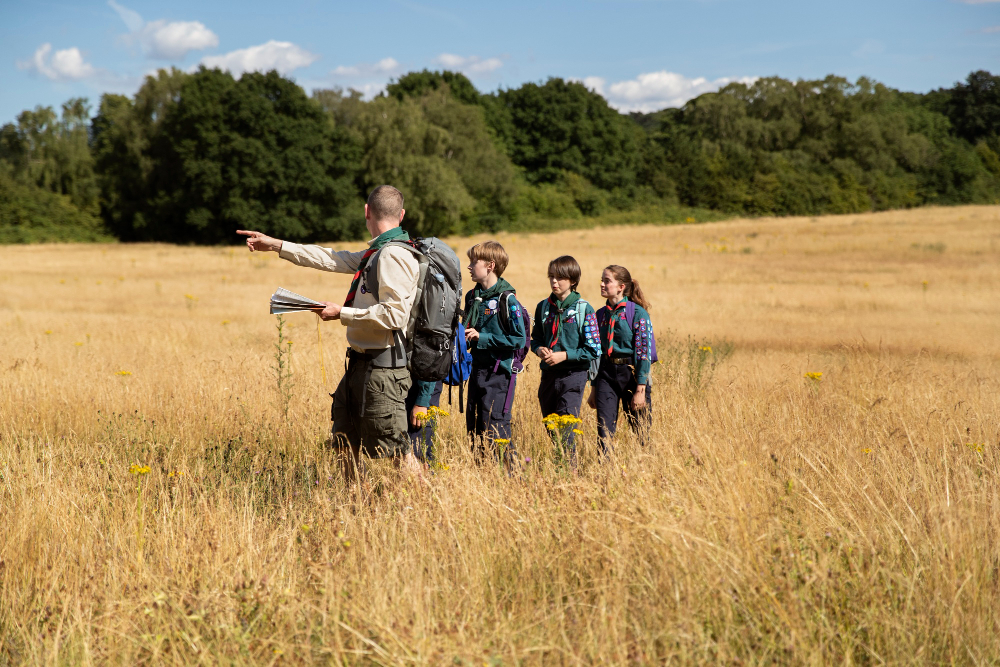
Importantly, the connection to nature doesn’t end with the school bell. Parents are encouraged to continue this outdoor lifestyle after hours and on weekends. It’s common for families to:
In short, outdoor education in Finland works because it doesn’t stop at the classroom or schoolyard—it’s reinforced by families, communities, and cultural traditions. It’s a full ecosystem of learning, one where everyone plays a role in helping children stay connected to the natural world.
No educational system is without its hurdles—but in Finland, challenges are seen as opportunities for innovation, not roadblocks. Instead of retreating indoors at the first sign of discomfort or inconvenience, Finnish schools have developed smart, flexible ways to make outdoor learning work in a wide range of conditions.
One of the most obvious challenges in Finland is the long, cold winter. In many regions, snow covers the ground for months, and temperatures can drop well below freezing. Rain is also frequent during autumn and spring. But rather than canceling outdoor learning, Finnish schools plan for it. The solution starts with proper clothing: children wear layered thermal clothing, waterproof outerwear, wool socks, mittens, and hats. Schools help families understand what kind of gear is needed and ensure that every child is equipped. Teachers also adjust the length and intensity of outdoor sessions based on the weather, and many schools have built simple shelters—like lean-tos or tarped areas—where children can gather safely for part of the lesson. In short, there’s no such thing as bad weather—just the wrong clothes.
Not every school in Finland is surrounded by forests or fields. In urban areas, space is limited and natural areas may not be right outside the school gates. But Finnish educators have responded creatively. Many city schools make use of nearby parks, even if they require a short walk or bus ride. Some cities offer "nature buses"—mobile classrooms that take children to green spaces. Others invest in rooftop gardens, green courtyards, or even develop "mobile forest classrooms"—modular outdoor spaces that can be temporarily set up in an urban setting. These approaches ensure that even city-based students have regular access to outdoor learning, regardless of their environment.
Another common concern about outdoor education is the risk of students getting distracted, wandering off, or getting hurt. Open spaces come with more variables than a controlled classroom. However, Finnish schools take this seriously and have developed a culture of strong outdoor supervision. Teachers are well-trained in risk assessment, and schools have clear safety protocols for outdoor lessons. Children are taught from an early age how to move safely in natural environments, how to use tools responsibly, and how to look out for one another. Instead of overprotecting children, the Finnish approach encourages measured freedom—helping students learn to take responsibility and develop good judgment through experience.
Outdoor learning doesn’t require forests as large as Finland’s. The key is the mindset. Educators everywhere can:
Finland teaches us that learning can happen anywhere, and that nature is the best classroom we already have.
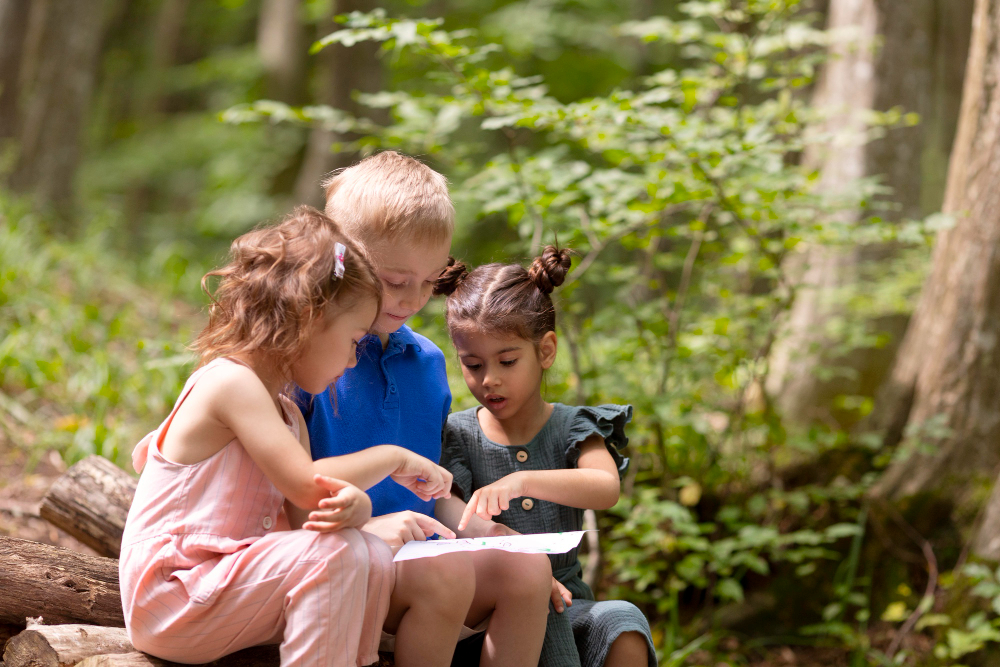
Are you curious to see this inspiring approach firsthand? TechClass offers guided school visits in Finland, where educators, researchers, and school leaders can experience outdoor learning in real settings.
Finland shows the world that powerful learning doesn’t always need technology or fancy classrooms. Sometimes, it just needs a forest, a group of curious children, and the courage to step outside.
Outdoor learning in Finnish schools is a shining example of how education can be joyful, healthy, and deeply connected to the world around us.